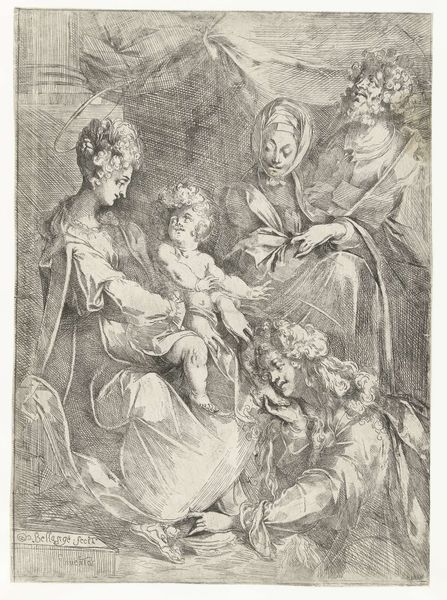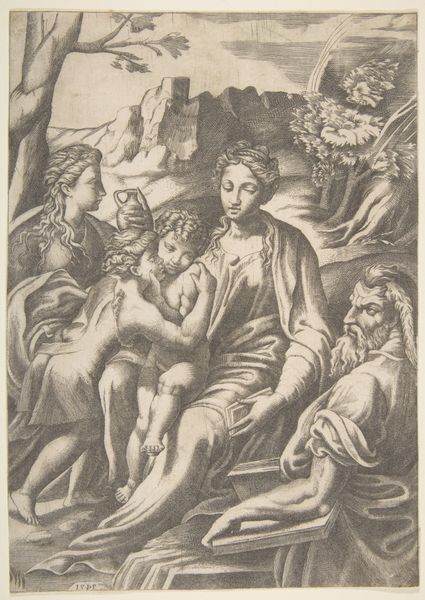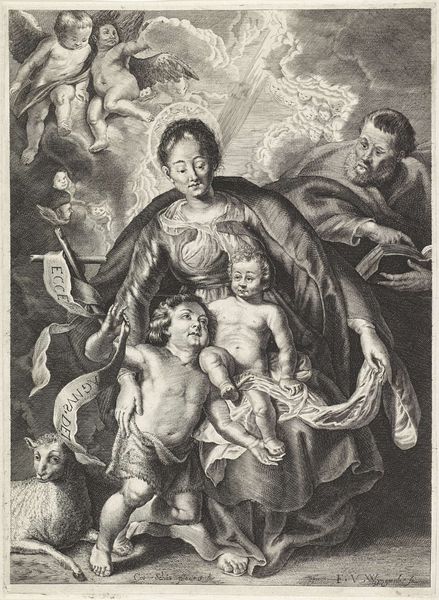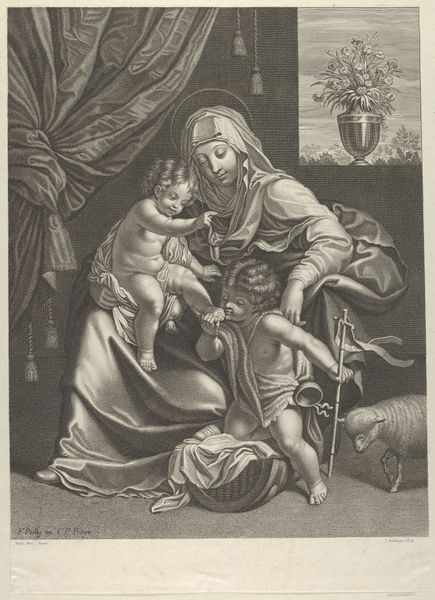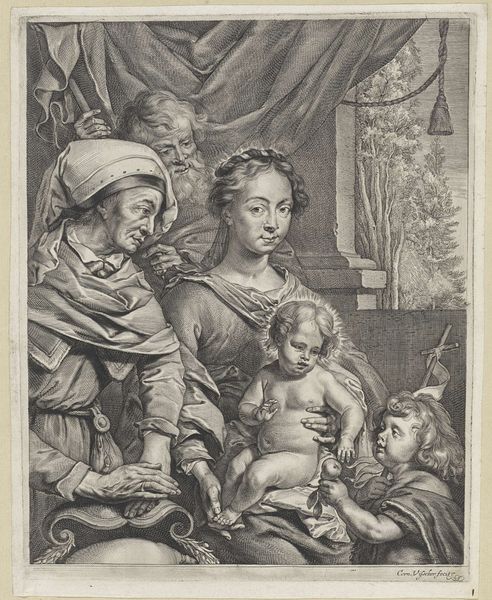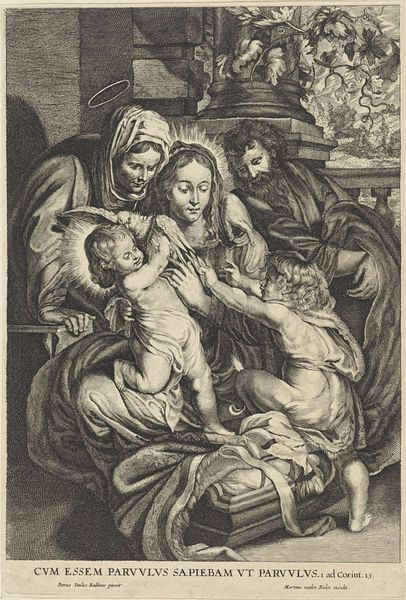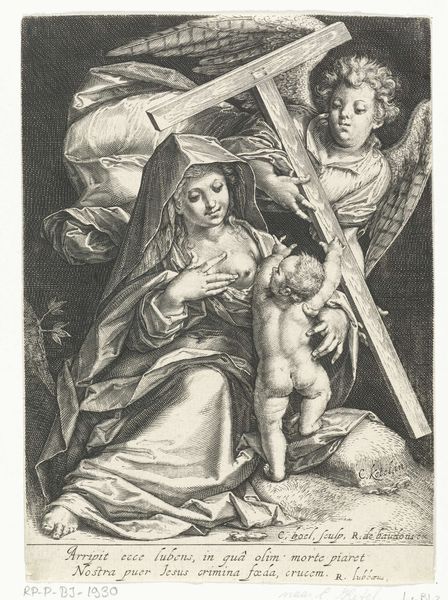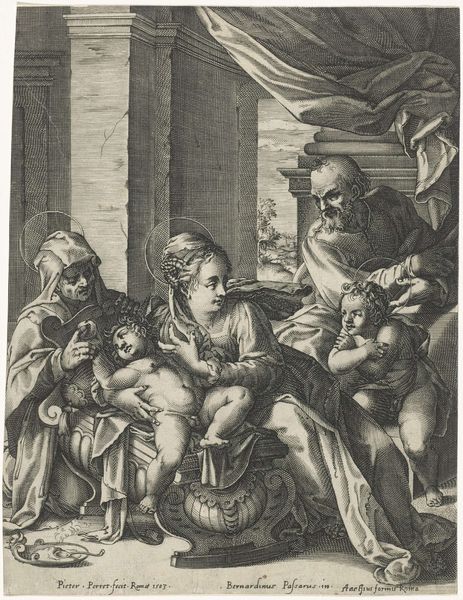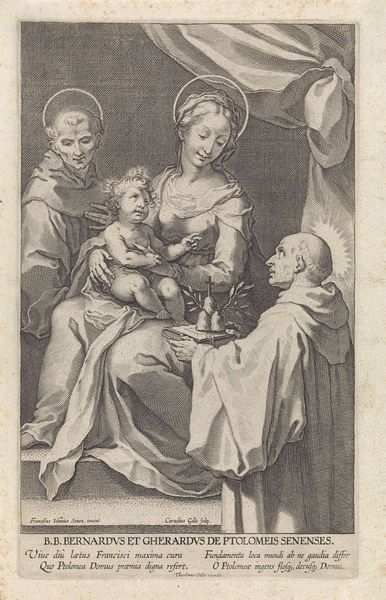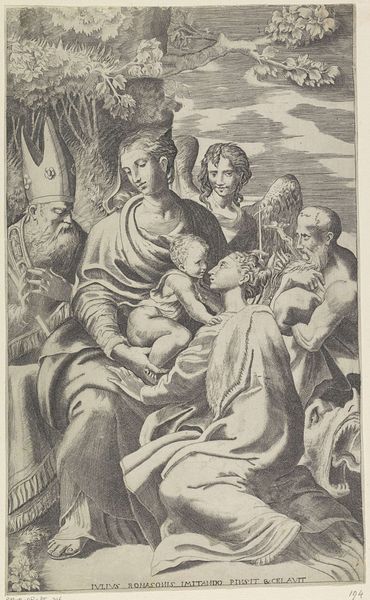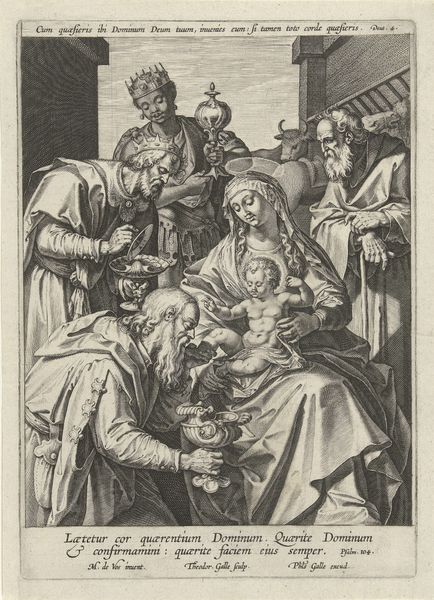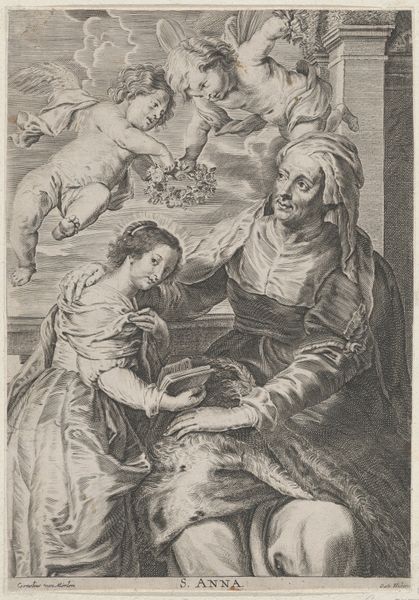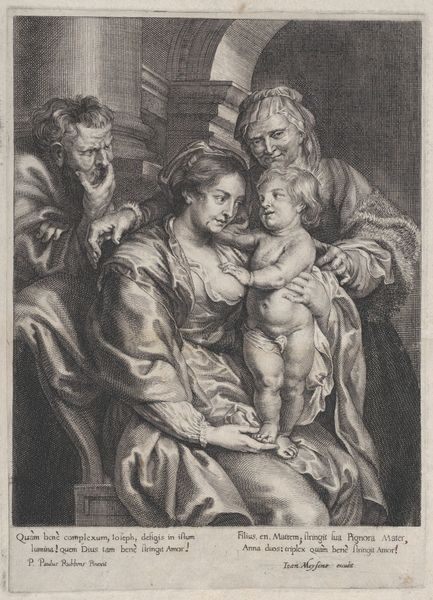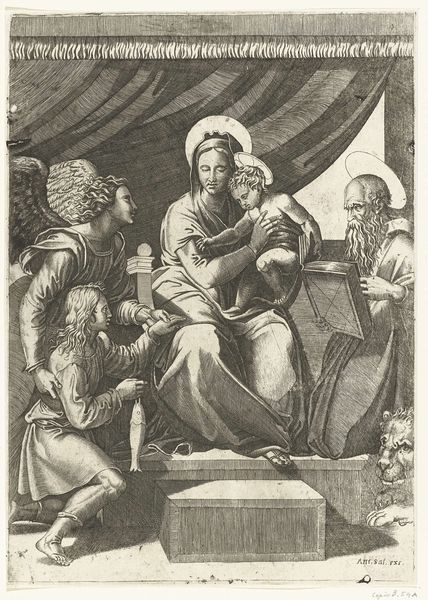
Virgin and Child with Saint Catherine, Francis of Assisi and John the Baptist 1620 - 1670
0:00
0:00
drawing, print, etching, engraving
#
portrait
#
drawing
#
baroque
# print
#
etching
#
figuration
#
portrait reference
#
child
#
group-portraits
#
surrealism
#
history-painting
#
italian-renaissance
#
engraving
Dimensions: Sheet: 16 1/8 × 11 7/16 in. (41 × 29.1 cm)
Copyright: Public Domain
Curator: Standing before us is "Virgin and Child with Saint Catherine, Francis of Assisi and John the Baptist," an etching by Giovanni Battista Bonacina, likely created sometime between 1620 and 1670. It’s part of the Metropolitan Museum’s collection. Editor: The texture immediately strikes me. The intricate crosshatching creates a world of swirling drapery, almost overwhelming the figures themselves. It’s restless, baroque. Curator: It absolutely captures that High Baroque aesthetic, wouldn’t you say? This work comes out of a period that saw religious iconography being utilized towards quite elaborate theatrical and even political ends. The patronage networks of the time fostered and shaped the imagery. Editor: Observe how Saint Catherine's wheel and the halos radiate divinity, creating visual echoes of celestial power. And Francis of Assisi, with his book, perhaps alluding to the word made flesh. The image feels dense with religious narrative and significance. Curator: And look at the compositional choices here. Bonacina consciously placed Mary and Jesus centrally. You could suggest that in placing the figures of Catherine, Francis, and John around them, the etching implies both reverence and their symbolic roles as earthly intercessors. Editor: The cherubic infant John, seen from the back, has a sense of vulnerability, of nascent sacrifice, perhaps a nod towards the narratives associated with both baptist saints of old and his role as a future saint in his own right. What a fascinating way to visually underscore his destiny within the grander sacred story. Curator: Right, and beyond the symbolism, these prints had a life within social practice too. They might serve as devotional aids within aristocratic families or operate as instruments in conveying the visual and ideological message that the Church endorsed. The art of this time operated to create networks of patrons and promote an intended public identity. Editor: It’s sobering how these symbolic constructs have maintained a cultural lifespan of centuries and still resonate with many today. It serves as a vivid reminder of the enduring impact of visual codes and cultural conditioning on shaping and structuring collective understanding. Curator: Thinking about the conditions that enabled this artwork truly sheds a light on the dynamics between artistic expression, religious power, and social structures. Editor: For me, contemplating how these archetypes continue to influence collective memory is what gives the artwork such enduring and uncanny depth.
Comments
No comments
Be the first to comment and join the conversation on the ultimate creative platform.
